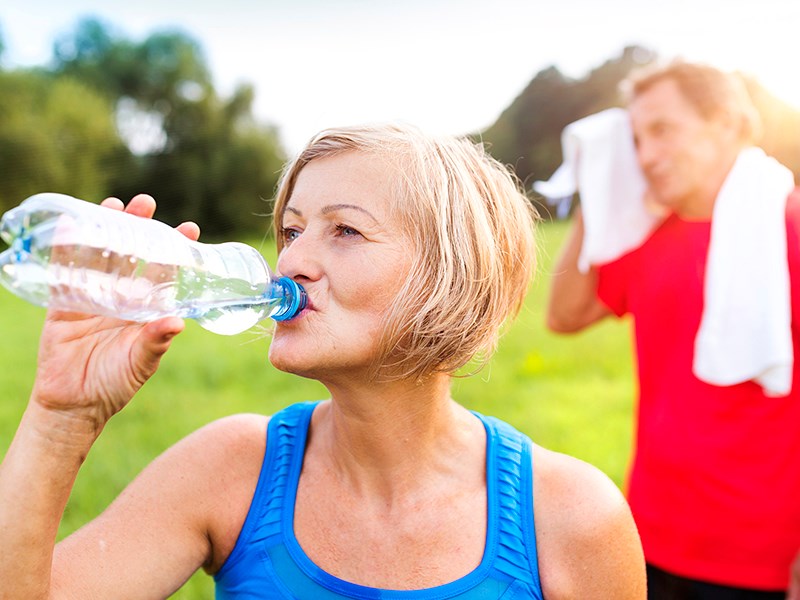Dripping sweat and having a drenched shirt certainly add to that post-workout feeling of satisfaction, but what does sweat really mean about our workout intensity or weight loss?
The answer is: Not much.
Let’s take a look at our two types of sweat glands, apocrine and eccrine. Our apocrine system is our “emotional” sweat system, activated by stress, nervousness and the like, and is typically concentrated in the underarm and groin area. When you think about smelly sweat, or the sweat that leaves yellow stains, this is the culprit.
Our eccrine system, on the other hand, is our “air conditioning system,” found from head to toes. This system activates when the outside temperature rises, or our body temperature rises. The cooling effect is achieved through the evaporation of sweat from our skin.
So when working out, and I know it’s counterintuitive, the more you wipe away your sweat, the more you sweat, since your body is trying to lower its temperature. As for the smell of our cooling sweat, it’s much “milder” than our emotional sweat.
So sweat during exercise is more about cooling you down, rather than an indicator of intensity, a successful workout, or weight/calories lost. There are many types of exercise that are not sweat-inducing, but are excellent physically, mentally and for fat burning.
We also need to consider that the amount we sweat depends on a variety of factors not related to temperature, which include sex, age, genetics, weight and how fit we are. Step on the scale post-workout and you’ll notice a drop, but this is water weight – your sweat – and now you need to replenish it by rehydrating.
It is important to note, then, that topical creams that increase body temperature before your workout will definitely stimulate blood flow and heat in that area of your body, but the sweat is there only to cool you down, and has no impact on fat burning whatsoever. You cannot spot-treat your body like that. And while some of these products suggest they more quickly prepare you for exercise because your body is warmed, one should take care as a successful warmup does more than just warm the body, but lubricates the joints and sliding surfaces for the upcoming work.
Joint safety is paramount to staying injury free. Before adopting something new into your workout regime or diet, always consult with a medical professional.
Sweating will help beat the heat, and it does make me feel more successful post-workout, but it definitely does not mean anything in regard to intensity or weight loss. Just remember to do what you can with what you have where you are, and always prioritize the positive.
Sweat and hydration: Tips for summer
-
Trust your thirst cues. Eight glasses of water a day is a myth. Depending on your personal needs, diet, exercise, and the temperature, you may need more or less than that. Always keep a refillable bottle with you and you’ll never be without a refreshing sip to quench your thirst.
-
Think electrolytes. If you are heavily exerting yourself in the heat, water alone may not be enough. Sports drinks do have a benefit in this case, but I suggest looking for a low sugar option.
-
Train early or late. Consider changing your training schedule to early morning before the sun is at its peak, or later in the evening as the weather starts to cool. This will keep you from overheating, and possible dehydration.
-
Recognize signs of dehydration. Most of us have suffered from mild dehydration before. You feel a little foggy, or have a headache and dry mouth. Learn to recognize these signs so you nip dehydration in the bud, before it becomes more serious.
Melissa Sloos is a certified group fitness instructor, spin instructor and studio manager at Coast Fitness.



